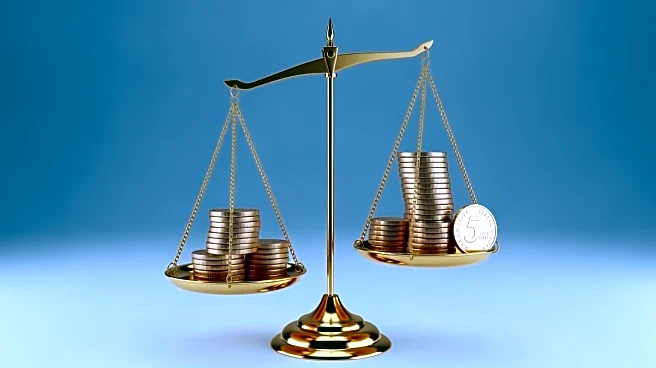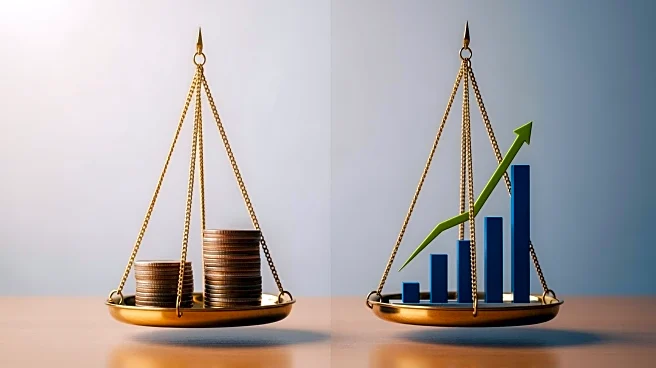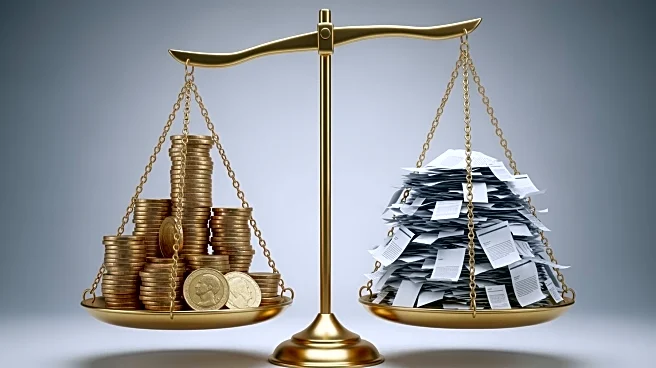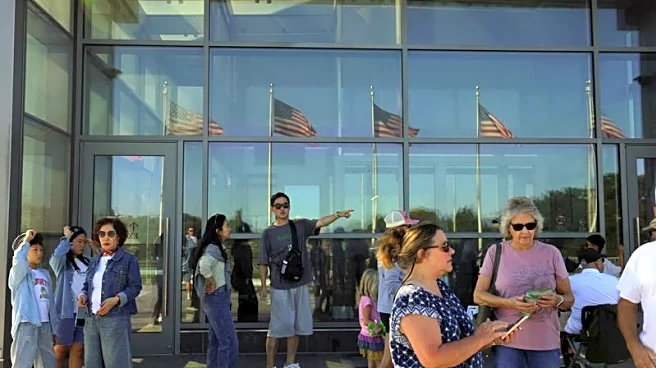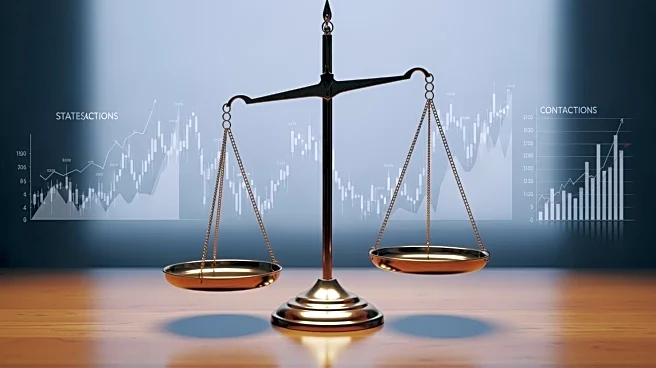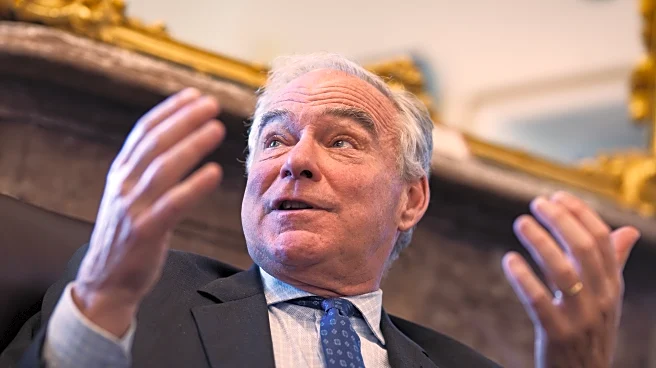What's Happening?
The Congressional Budget Office (CBO) has projected that if President Trump's tax cuts are made permanent, U.S. debt held by the public could surpass 200% of GDP in the coming decades. The Tax Cuts and
Jobs Act, a key policy from Trump's first term, is set to expire soon, but there are calls to extend it. The CBO estimates that without changes to fiscal policy, debt could reach 214% of GDP by 2054. The current U.S. debt stands at $36 trillion, with $29 trillion held by the public. The cost of servicing this debt already exceeds $1 trillion annually, surpassing the Pentagon's budget.
Why It's Important?
The potential increase in debt-to-GDP ratio poses significant risks to the U.S. economy, including higher borrowing costs and increased interest rates. This scenario could lead to fiscal instability, affecting government spending on essential services like education and infrastructure. The projections highlight the sensitivity of the nation's finances to borrowing costs and underscore the need for sustainable fiscal policies. The situation could also impact global financial markets, as the demand for U.S. debt may not keep pace with supply, leading to economic disruptions.
What's Next?
The debate over making Trump's tax cuts permanent will likely intensify, with fiscal conservatives pushing for a comprehensive assessment of its long-term impact on national debt. The CBO's projections may influence policy discussions and legislative decisions regarding fiscal sustainability. Stakeholders, including lawmakers and economic analysts, will need to consider alternative strategies to manage debt levels and ensure economic stability.
Beyond the Headlines
The situation raises broader questions about the effectiveness of supply-side economic reforms and their impact on growth and inflation. The potential for restructuring debt and exerting political pressures on countries to buy U.S. debt could have geopolitical implications. The need for a balanced approach to fiscal policy, considering both revenue generation and spending cuts, is crucial to avoid long-term economic challenges.
